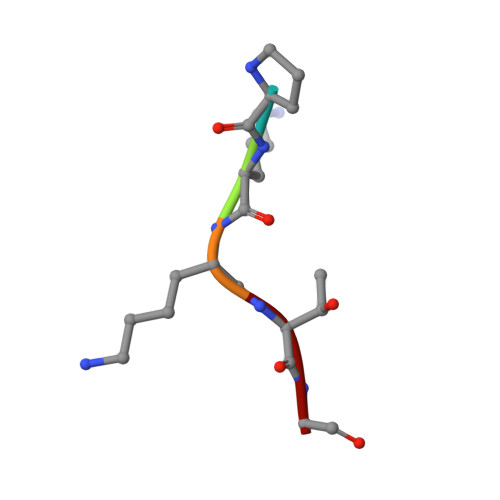Deacylation Mechanism by SIRT2 Revealed in the 1'-SH-2'-O-Myristoyl Intermediate Structure.
Wang, Y., Fung, Y.M.E., Zhang, W., He, B., Chung, M.W.H., Jin, J., Hu, J., Lin, H., Hao, Q.(2017) Cell Chem Biol 24: 339-345
- PubMed: 28286128
- DOI: https://doi.org/10.1016/j.chembiol.2017.02.007
- Primary Citation of Related Structures:
4X3O, 4X3P - PubMed Abstract:
Sirtuins are NAD-dependent deacylases. Previous studies have established two important enzymatic intermediates in sirtuin-catalyzed deacylation, an alkylamidate intermediate I, which is then converted to a bicyclic intermediate II. However, how intermediate II is converted to products is unknown. Based on potent SIRT2-specific inhibitors we developed, here we report crystal structures of SIRT2 in complexes with a thiomyristoyl lysine peptide-based inhibitor and carba-NAD or NAD. Interestingly, by soaking crystals with NAD, we capture a distinct covalent catalytic intermediate (III) that is different from the previously established intermediates I and II. In this intermediate, the covalent bond between the S and the myristoyl carbonyl carbon is broken, and we believe this intermediate III to be the decomposition product of II en route to form the end products. MALDI-TOF data further support the intermediate III formation. This is the first time such an intermediate has been captured by X-ray crystallography and provides more mechanistic insights into sirtuin-catalyzed reactions.
Organizational Affiliation:
School of Biomedical Sciences, University of Hong Kong, Hong Kong, China.






















